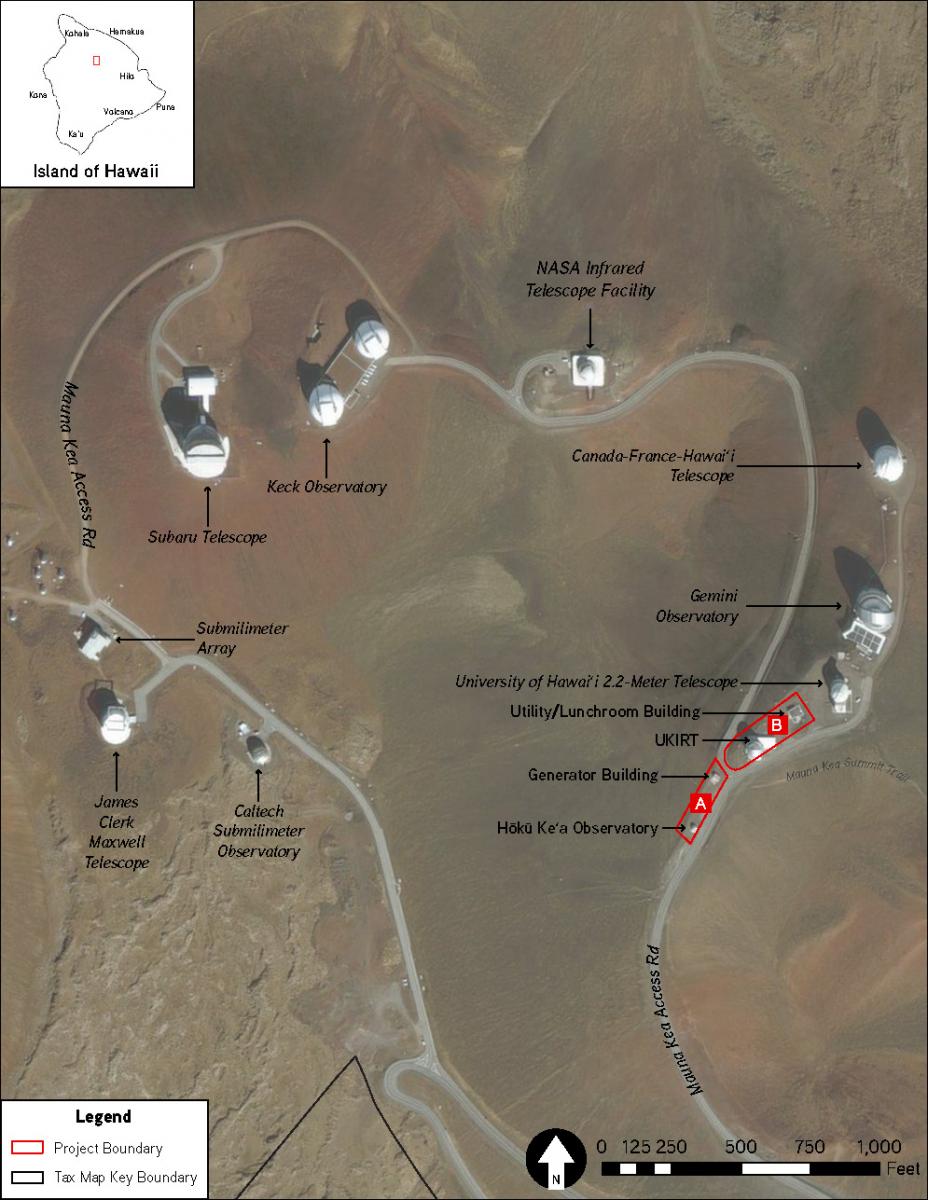Virtual Community Meeting
Date: Wednesday, September 22, 2021 at 5:30pm HST
Location: Webinar via Zoom
Focus: Provides an overview of the project and the Draft Environmental Assessment, including the anticpated impacts and mitigation measures. A recording of the meeting will be available here. The public comment period ends October 8, 2021.
Project Background
The Hōkū Ke‘a telescope and observatory was built in the 1960s and acquired by the University of Hawai’i in 1970. In 2003, the University of Hawaiʻi gave control of the telescope to UH Hilo’s Department of Physics and Astronomy to train undergraduates on the instrument. In 2010, the old 24-inch telescope was replaced by a 36-inch telescope. Although the Hōkū Ke‘a telescope was intended to play a critical role in the educational mission of UH Hilo’s Department of Physics and Astronomy, it did not achieve satisfactory operational performance. UH Hilo ceased operations 2015 and decided to decommission the telescope as part of the University's committment to reduce its footprint at the summit of Maunakea.

Above: Hōkū Ke‘a Observatory.
Observatory Historical Timeline
1968: Construction of two Boller & Chivens 24” telescopes on Mauna Kea, one for the Air Force Cambridge Research Laboratories (located on the current HKO site) and the other by NASA-Lowell Observatory.
1970: After 19 months mostly dedicated to Moon studies (in particular in the infrared), the Air Force cedes ownership of their observatory to UH in June 1970.
1970-2002: The UH 24" telescopes are used for numerous studies of the moon, asterois and mars, as well as testing infared detectors and monitoring atmostpheric conditions of Mauna Kea. In 1994, the NASA-LOwell Observatory is decommissioned to make way for the Gemini North Observatory.
2003: The UH Institute for Astronomy (IfA) transfer the stewardship of the Boller & Chivens 24” telescope to UH Hilo Department of Physics & Astronomy. The telescope is regularly used by students to conduct projects, in particular on variable stars.
2008: The Boller & Chivens 24” is decommissioned after 40 years of operation. A new 36” telescope from Equinox Intersciences will replace it. The enclosure must also be replaced. The new observatory is renamed Hōkū Ke‘a.
2010-2012: The new observatory is completed. However, optical and mechanical problems arise with the new telescope and observatory dome.
2013: Under a recommendation by its new director, UHH estimates that the current equipment will be too costly to repair and will never meet the requirements of its astronomy program. A decision is made to replace the observatory again with a smaller but much more modern telescope design.
2015: As part of the University's commitment to decommissioning and reducing its footprint at the summit, UHH indicates that the observatory will be decommissioned.
Above: Generator Building
Above: Utility/Lunchroom Building
Short-term and Temporary
The Proposed Action would have short-term and temporary impacts during deconstruction and site restoration activities that would be less than significant to biological resources, geology and soils, water resources, air quality, the existing noise environment, traffic and transportation, socioeconomics, public facilities and services, and natural hazards.
Beneficial
The Proposed Action would have beneficial impacts to the visual environment, cultural practices, and archaeological and historic resources.
Secondary
The removal of the Hōkū Ke‘a facilities would result in a reduction of teaching, training, and research opportunities for Hawai‘i students in the field of astronomy. These adverse impacts are intended to be offset, to an extent, by construction of a new observatory facility at the Halepōhaku Mid-Level Facility on Maunakea. It has been determined that the beneficial impacts of decommissioning and removal of the Hōkū Ke'a facilities outweigh the adverse impacts of relocating the student facility to a less optimum location. However, if the lower elevation facility is not constructed, the result would be a more significant, and possibly permanent, loss and adverse impact on Hawai‘i's astronomy students.
-
Environmental Assessment (Early 2020 thru Early 2022)
-
Site Decommissioning Plan (Mid-2020 thru Early-2022)
-
Conservation District Use Permit (Early-2022 thru Early-2023)
-
County Building Permit (Mid-2022 thru Early-2023)
-
Contracting (Early-2023 thru Mid-2023)
-
Construction & Site Restoration (Mid-2023 thru Mid-2024)

